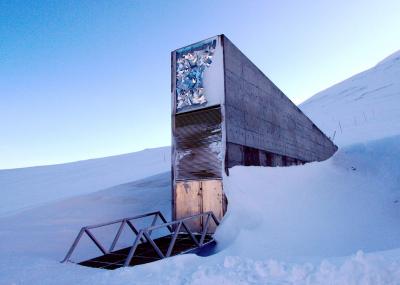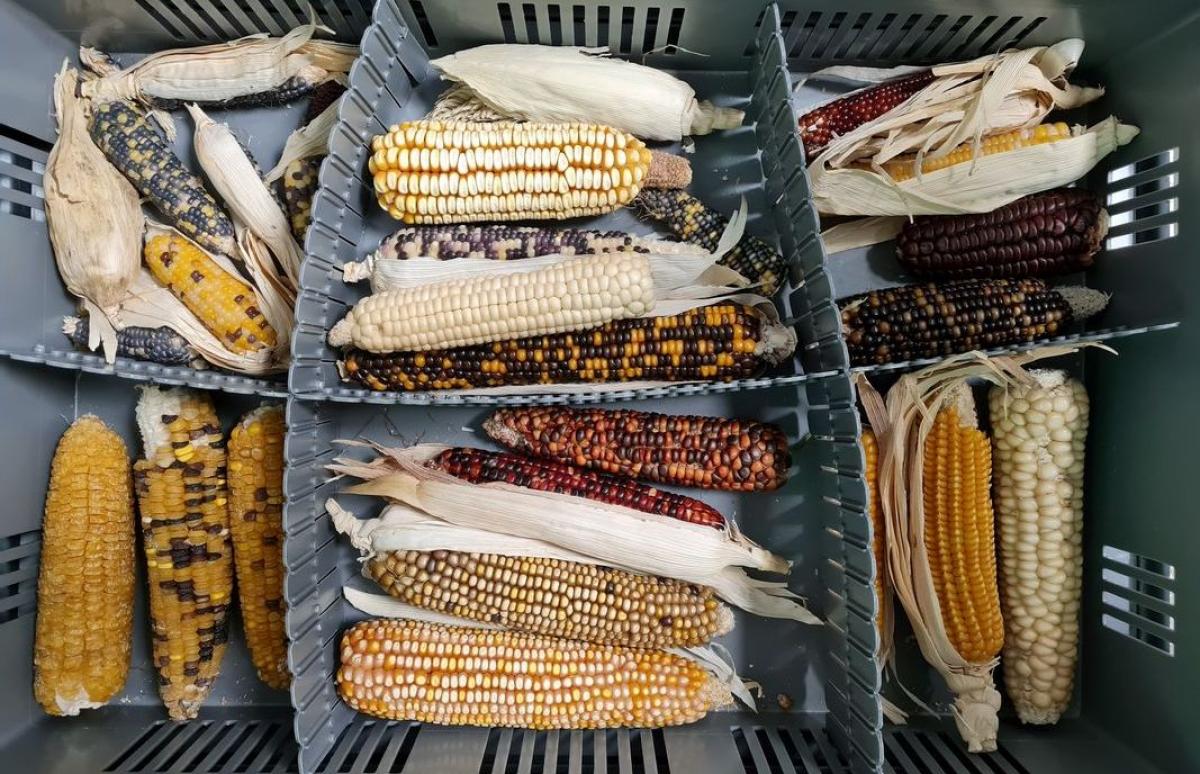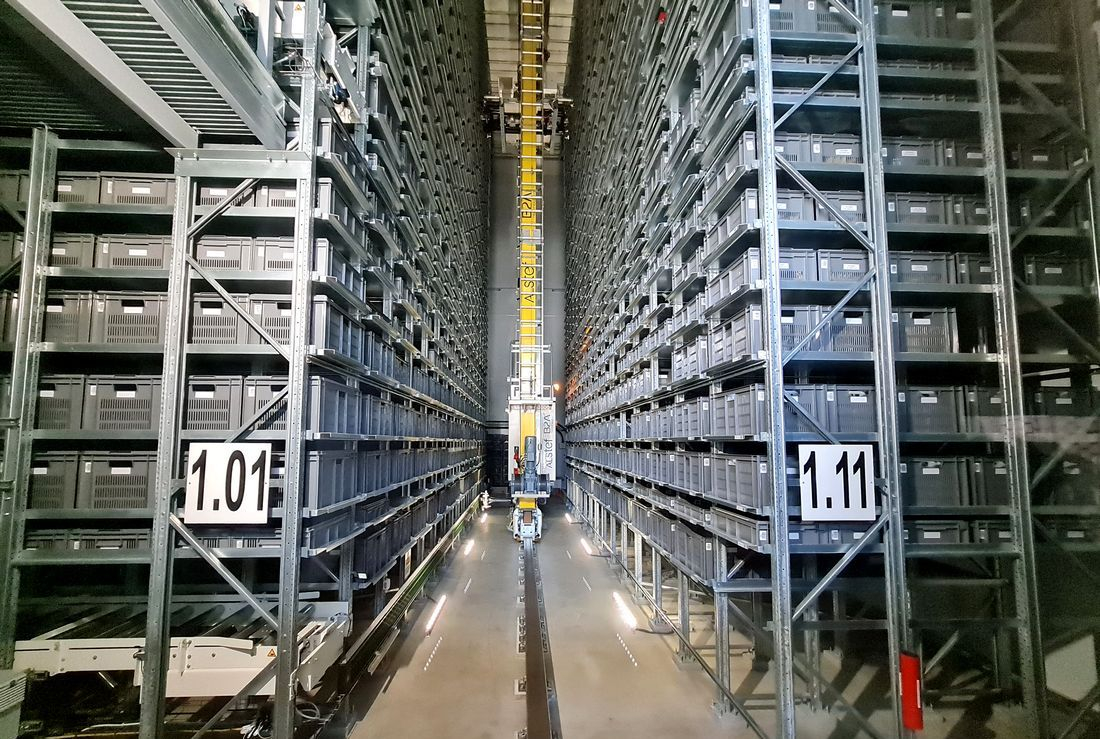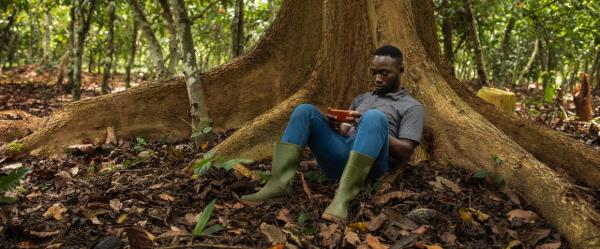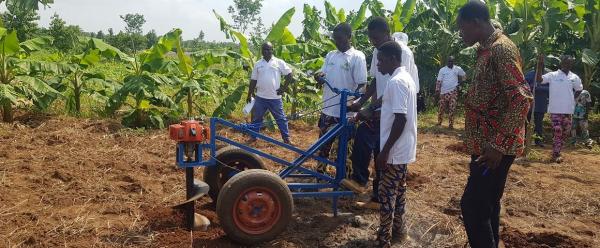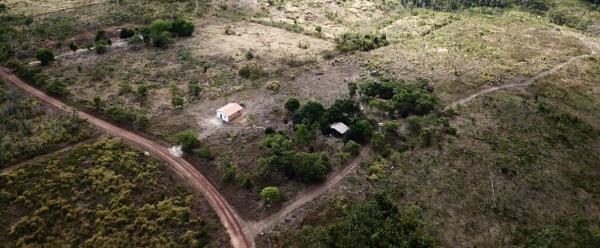Call to action 25 November 2025
- Home
- CIRAD news
- News
- Biodiversity should not be kept in the fridge
Biodiversity should not be kept in the fridge
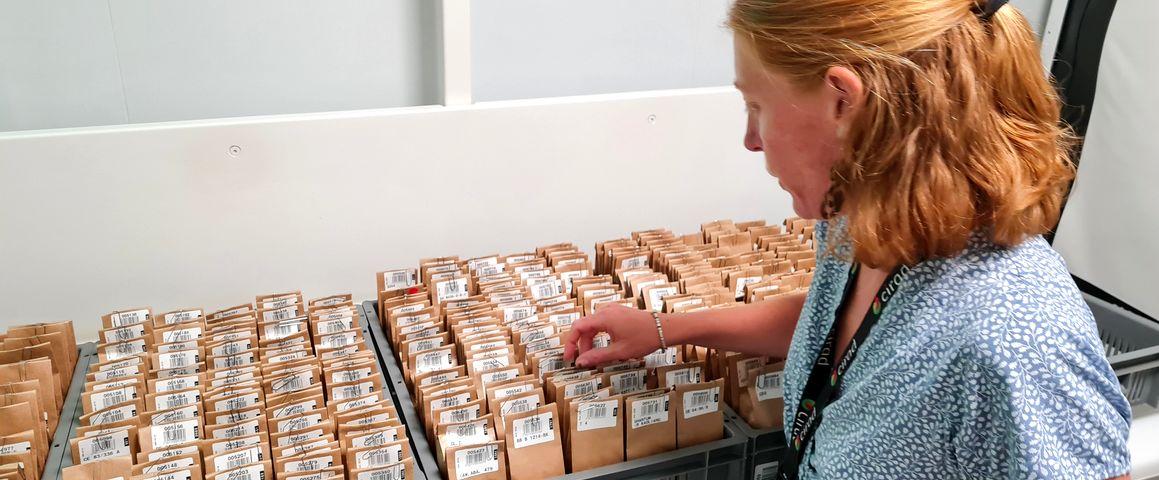
Paule Teres, Head of the GAMéT BRC, in front of a sorghum seed collection © C. Dangleant, CIRAD
Everyone has seen impressive photos of the Svalbard global seed vault at least once. Seed banks are often seen as the world's granaries or as a rampart against global food crises, but while they have their uses, on their own, they will not be enough to protect cultivated biodiversity, or cope with global change.
For dynamic biodiversity management
For Christian Leclerc, an eco-anthropologist at CIRAD and co-leader of the Biodiversity priority research topic, "the expression 'conserving biodiversity' conjures up pictures of putting it away wrapped in cotton wool, a static form of protection as is the case for the seeds stored at Svalbard. However, the living world is made up of interactions between species, societies and their environment. Biodiversity is dynamic and should be managed as such."
Using resources to conserve them better
At CIRAD, researchers are advocating for dynamic management of biodiversity and, a fortiori, of crop diversity. "Unlike wild biodiversity, cultivated species have been fashioned by human societies for thousands of years. Their conservation therefore relies on their being used. If we stop using them, they die out", says Mathieu Thomas, a geneticist at CIRAD. And that is precisely what is currently happening.
Biodiversity for food and agriculture is in decline, according to a report published by FAO in 2019 (see box). Just nine plants currently account for 66% of global output. However, several studies have demonstrated the benefits of crop diversification for ecosystems, and for the resilience of rural households.
A proportion of crop biodiversity is kept in biological resource centres (BRCs), also known as seed, grain or gene banks. These infrastructures collect, conserve and disseminate genetic resources in the form of small batches of seeds.
History of a divergence between farmers and seed producers
The first seed banks were born in the early 20th century. They supported the professionalization of breeding operations for the main crop species, and resulted in a separation between seed producers and farmers. "These genetic collections were designed and built by and for plant breeding scientists", Christian Leclerc says. In recent years, however, the scientific community has realized the importance of involving farmers in breeding programmes, to create varieties tailored to their needs and those of consumers. Why should farmers not also be associated with managing seed banks? Particularly since "there is no better way of conserving crop biodiversity than by using it", Christian Leclerc reminds us. That observation is promoting scientists to wonder about how seed collections should be run and managed.
Opening up seed banks
With its 40 000 seed samples, the ARCAD genetic resources centre, north of Montpellier, is the most modern seed bank in Europe. Paule Teres is Head of ARCAD's GAMéT BRC (seeds suitable for Mediterranean and tropical conditions). Its task is to open access to these seeds and establish partnerships with players involved in managing diversity, to meet their needs and expectations better. Paule Teres feels that dynamic management of genetic resources at the BRC is vital to respond to climate disruption. "global change is so quick nowadays that if I take a packet of seeds out in 25 years' time, there is very little chance that they will still be suited to their environment", she says.
Coordinating ex-situ and in-situ conservation
However, dynamic management is not as easy as it looks, and it means scientists have to take a fresh look at how they work. Until now, most seeds conserved ex situ were genetically homogeneous lines with characters of agronomic interest determined by breeders. "Conversely, in farmers' fields, particularly on food crop farms, it is mostly genetically heterogeneous populations-varieties that are used, and managed in situ", says Mathieu Thomas. This type of management is dynamic because the crops adapt to climate change and requirements in time.
"By opening up access to seeds for farmers, seed circulation between BRCs and farmers' fields becomes a new, more dynamic and more open management method", Paule Teres explains. "But isn't that what we want? The aim is to boost the complementarity between the two management methods in order to conserve as much biodiversity as possible, with a continuum between ex-situ and in situ conservation."
The researcher's aim is to use ARCAD to ask new research questions about such complementarity issues. And there are plenty to be asked. "For instance, do our BRCs really conserve inter- and intra-varietal diversity? Given that it is the latter that is vital for adapting crops to the current climate disruption."
A third location devoted to crop biodiversity
Two research projects set out to exploit diversity in the broadest possible sense: CoEx, coordinated by CIRAD, and Dynaversity. They came to the same overall conclusion: restoring confidence between players is a vital prerequisite for work in partnership. This is what prompted the Tiers-div initiative, a third location devoted to crop biodiversity that brings together scientists, farmers, small-scale seed producers and BRC managers. "Taking players out of their environment and organizations makes it possible to step aside and considerably encourages dialogue", Mathieu Thomas stresses. "Tiers-div is a bridge between different worlds, to tackle this decisive shared challenge: managing crop diversity collectively and dynamically to allow agricultural and food production systems to adapt to global change."
Biodiversity for food and agriculture is in decline. This is reflected in our diet. A 2019 FAO report announced that fewer than 200 of the 6000 species known made any substantial contribution to global food production and that just 9% of species accounted for 66% of that production.
For José Graziano da Silva, FAO Director General at the time, "the increasing loss of biodiversity for food and agriculture puts food security and nutrition at risk".

























